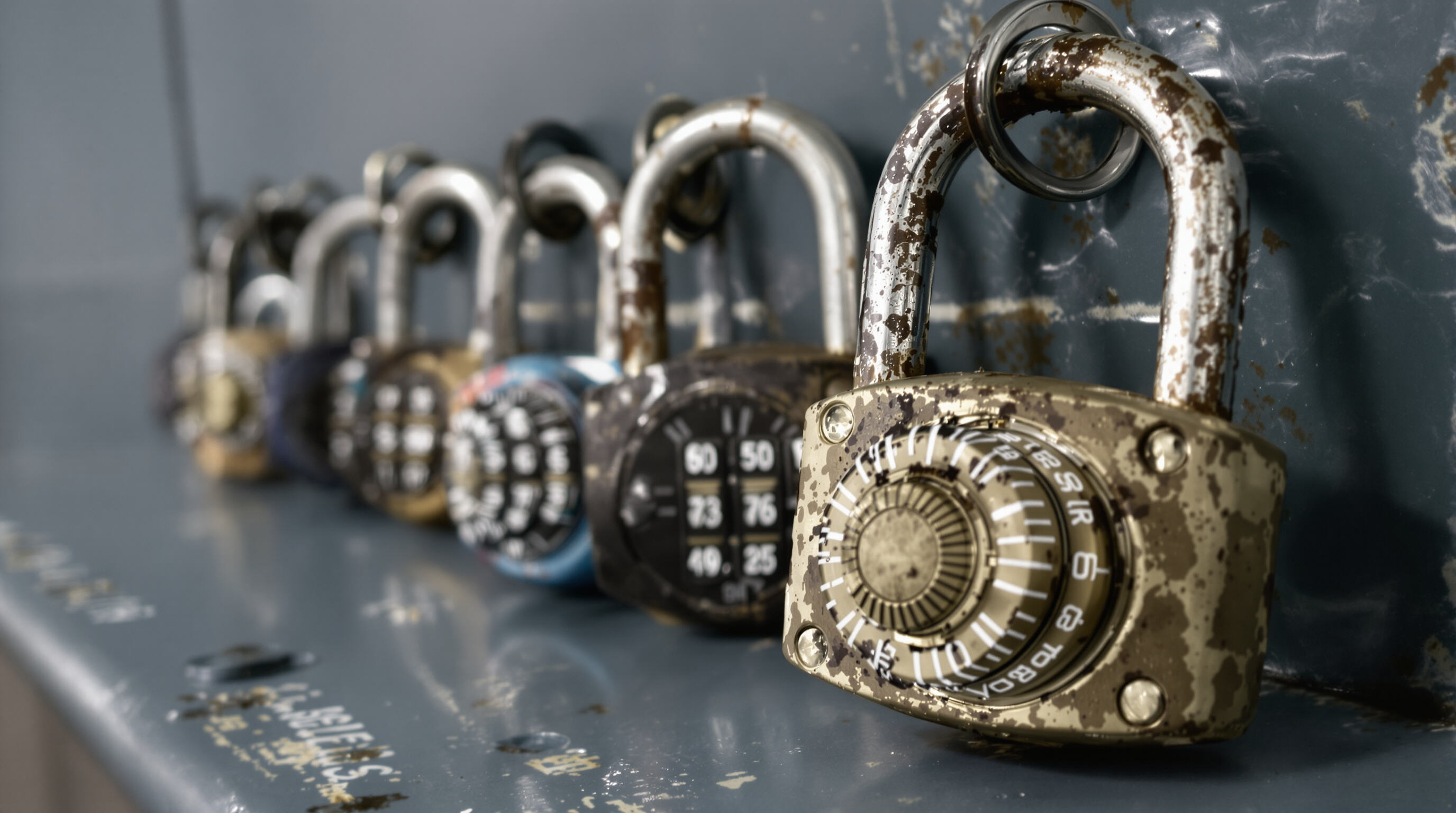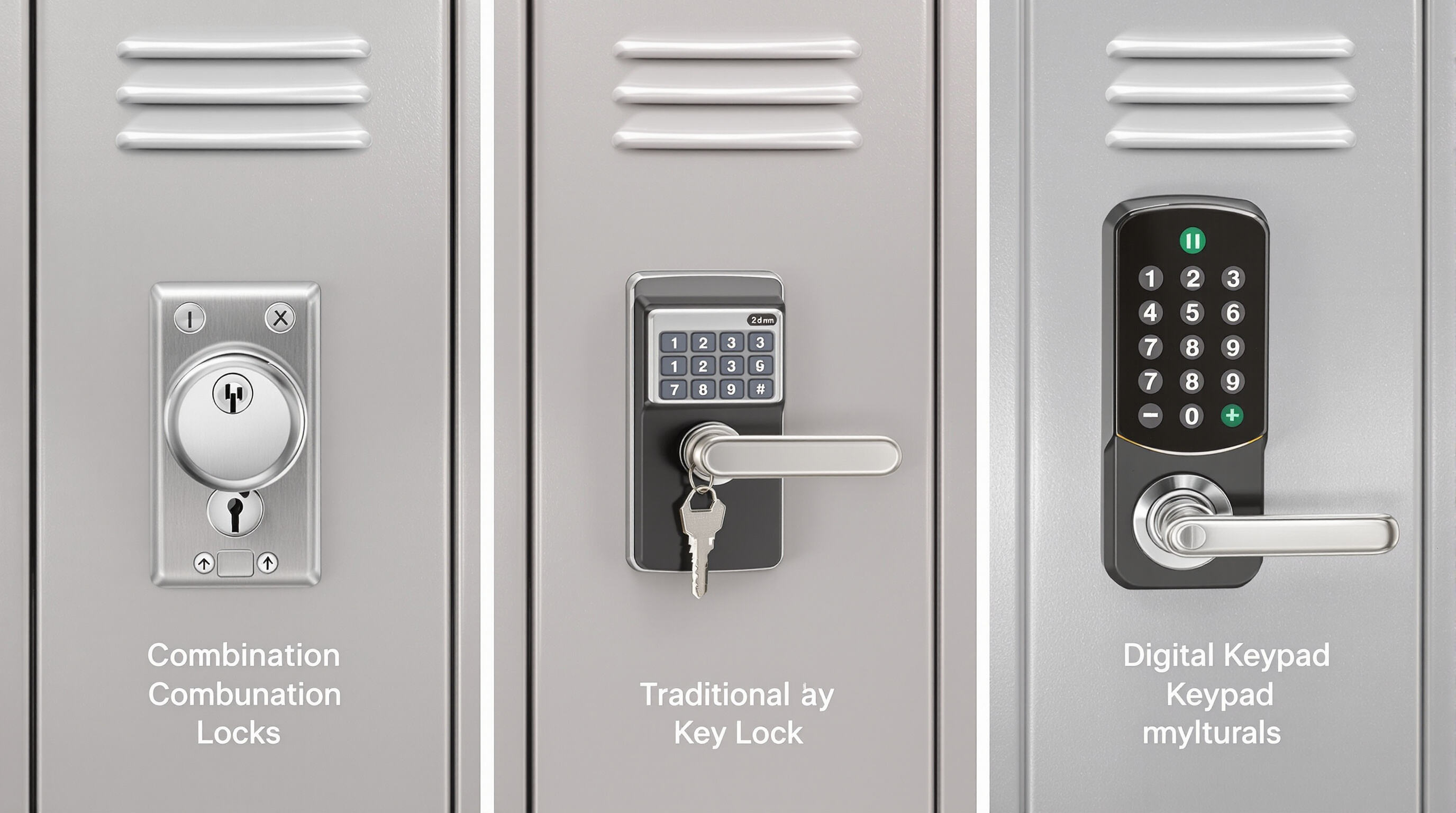Why a Combination Padlock Is the Best Choice for Gym Locker Security
How combination padlocks provide reliable security in shared gym environments
Combination padlocks bring both ease of use and solid security to busy gyms where people come and go all day long. The construction features tough steel shackles plus special anti-shim designs that really stand up against attempts at picking or breaking them open. When members can pick their own unique numbers, there's just less chance someone else will get into their stuff without permission, and gym staff don't have to worry about managing lost keys or duplicated copies. Looking at recent locker theft stats from 2023, facilities that still rely on old school shared key systems ended up dealing with around four times more break-ins than places where everyone had their own combo lock setup.
Advantages over key-based and card-operated locks: No lost keys, no swipe failures
Locks that need keys cause all sorts of headaches at gyms these days. The Fitness Industry Council reported last year that almost 28% of locker keys get lost every single year. That means people can't get into their lockers when they need to, plus there's the cost of replacing those missing keys. Then we have card systems which aren't much better. About 12 times out of 100, these cards won't work because someone's hands are damp from working out or the environment is just too humid. Combination padlocks actually solve both these problems since they depend on codes people remember rather than physical keys or swipe cards. No more worrying about losing something or dealing with tech that breaks down when it gets wet.
Understanding the mechanics of combination padlocks for everyday gym use
High-quality gym-grade combination locks typically feature 4-dial mechanisms with 10,000 possible combinations and sealed bearings that resist dirt and grime. Their fully mechanical design avoids electronic components that can fail in damp conditions. Some advanced models include reversible dials for left-handed users, reflecting thoughtful engineering tailored to real-world fitness routines.
Key Features to Consider in a Gym-Grade Combination Padlock

When selecting a combination padlock for gym use, prioritize durability, corrosion resistance, ergonomics, and shackle design. Durable construction is essential—choose models with hardened steel bodies and double-ball locking mechanisms. According to a 2024 gym security report, such locks reduce forced entry risks by 83% compared to basic variants.
Corrosion-resistant materials like stainless steel or zinc-alloy coatings prevent rust and ensure smooth operation in humid locker rooms, where moisture exposure occurs daily. This helps avoid mechanism jams over time.
Ergonomic design enhances usability after workouts: textured dials and raised number markings improve grip and visibility, even with sweaty hands. Finally, consider the shackle type—adjustable shackles (8—10mm) fit most standard lockers, while fixed models offer greater resistance to cutting or prying in high-traffic areas.
Combination vs. Key and Digital Locks: Security and Practicality in Gyms

Comparing Lock Types: Mechanical Combination, Key-Based, and Card-Operated Systems
Combination padlocks cut out the need for actual keys or those swipe cards we all lose somewhere. This matters a lot since studies show around 48 percent of locker room theft happens when people misplace their access stuff (Ponemon 2023). Regular key systems tend to get stuck or break after too much use, but combo locks keep working even after years of constant opening and closing. The newer card systems have their problems too despite looking high tech. Battery issues and worn out magnetic strips cause roughly 20% of all access problems at gyms these days. Someone trying to grab their gym bag after a workout only to find their card won't work is not a happy customer.
Why Combination Padlocks Reduce Risks of Lost Access and Unauthorized Duplication
The fitness industry loses around seven hundred forty thousand dollars every year because people steal gym keys and make copies of access cards according to Ponemon's research from last year. Mechanical combination locks solve this problem since they can't be copied like regular keys or magnetic cards that need replacing at costs between twenty and fifty bucks each time something gets lost or damaged. There's just nothing physical there to copy after all. These kinds of locks are actually pretty good value for money when looking at security options. This matters a lot in those big locker areas where almost a quarter of members say someone else has gotten into their lockers without permission sometime.
Security Trade-Offs: Simplicity of Mechanical Locks vs. Vulnerabilities of Digital Systems
Digital locks do offer convenience with remote code changes and tracking who comes and goes, but let's face it - those electronic components just don't handle moisture well at all. Mechanical padlocks made from materials that resist rust can last way longer though. We're talking around 10,000 operations before needing replacement, which is roughly triple what many battery operated keypads manage. Plus there's no worry about hackers getting through. Last year alone, nearly one out of seven locker break-ins at gyms with smart systems happened because someone cracked into the Bluetooth connection on these digital locks.
How to Choose and Use a Combination Padlock for Maximum Gym Locker Safety
Selecting the Right Size, Reset Option, and Code Complexity for Personal Use
When picking out a padlock for lockers, make sure it actually fits through the shackle hole most lockers have, usually around 6 to 8 mm wide. Resettable locks are worth considering especially if multiple people will be using the same locker over time. Going with 4 digit combinations rather than just 3 makes things much safer against someone trying random numbers. According to some gym security stats from last year, this simple change cuts down on forced entry attempts by about two thirds. And remember not to pick obvious codes either - birthdays, anniversaries, or strings of repeating digits are basically invitations waiting to happen for anyone looking to break in.
Best Practices for Setting and Remembering Your Combination Securely
- Avoid personal identifiers: 82% of compromised gym locks use codes based on birthdays or addresses.
- Use mnemonic devices: Turn numbers into memorable phrases (e.g., “23-15” = “2PM workout, 15 reps”).
- Secure storage: Write down codes on moisture-resistant paper and keep them in a sealed compartment of your gym bag—never store them on your phone.
Quick-Access Mechanisms for Post-Workout Convenience Without Compromising Security
When shopping around, pay attention to locks with angled or textured dials these make it much easier to enter codes when hands are wet or sweaty from working out. Many modern options come with silent reset mechanisms which lets users change their combinations without drawing attention and cuts down on those awkward moments where someone might peek over your shoulder. Gyms that see heavy traffic should look for models that have been put through their paces with at least 10,000 rotations per year and still maintain under half a percent failure rate even when exposed to humidity something Fitness Facility Standards 2023 really emphasizes. And don't forget the simple but important step of giving the lock a good tug after securing it just to be sure everything clicks into place properly.
FAQ
What makes combination padlocks more secure than other types of locks?
Combination padlocks eliminate the risk of lost or duplicated keys, and don't suffer from swipe card failures commonly seen in humid gym environments.
How many combinations can a high-quality combination padlock offer?
Most high-quality gym-grade combination locks feature a 4-dial mechanism with 10,000 possible combinations.
Are digital locks reliable for gym uses?
Digital locks can be convenient, but they tend to fail in moist conditions and are susceptible to hacking, especially if Bluetooth technology is involved.
What should be considered when buying a combination padlock for gym lockers?
Focus on durability, corrosion resistance, ergonomic design, and the right shackle type for your locker needs.
How can I securely remember my combination?
Use mnemonic devices and avoid personal identifiers. Store your combination in a secure area, like a sealed compartment in your gym bag.
Table of Contents
- Why a Combination Padlock Is the Best Choice for Gym Locker Security
- Key Features to Consider in a Gym-Grade Combination Padlock
- Combination vs. Key and Digital Locks: Security and Practicality in Gyms
- How to Choose and Use a Combination Padlock for Maximum Gym Locker Safety
-
FAQ
- What makes combination padlocks more secure than other types of locks?
- How many combinations can a high-quality combination padlock offer?
- Are digital locks reliable for gym uses?
- What should be considered when buying a combination padlock for gym lockers?
- How can I securely remember my combination?

